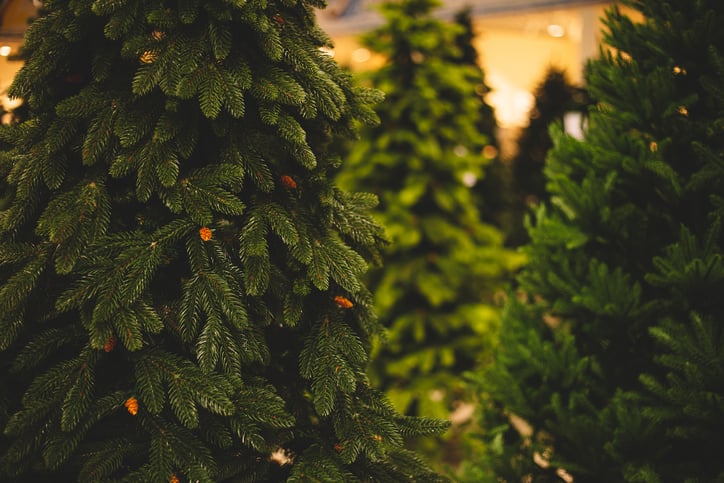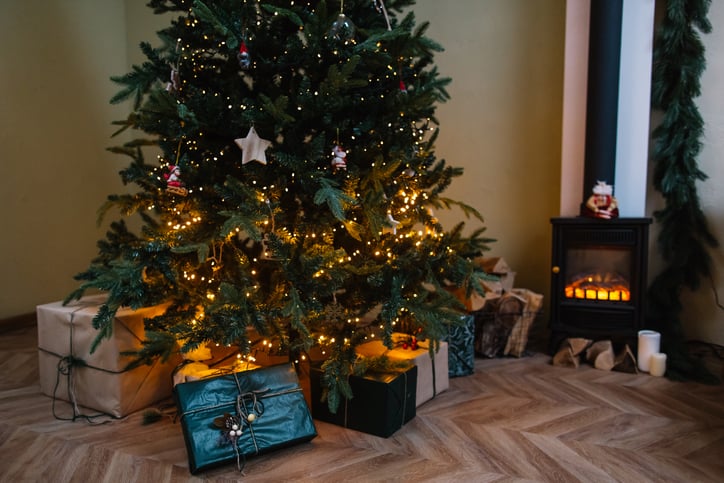Tuesday, December 13, 2022
The Christmas holidays are approaching and, when in doubt about how to decorate your home sustainably, you can explore numerous options to celebrate these dates and enjoy your fir trees without endangering the natural balance.
By Sally Jabiel
Beginning in Germany, the practice of planting a fir tree at Christmas time has spread throughout history across northern Europe to England, and from there to the rest of the world. The first tree to be a Christmas tree in Spain was in Madrid in 1870, when the railroad had already been rolling through our country for two decades and the industrial revolution was showing all its potential for development (and also exponential consumption of resources on a finite planet).
Now, however, we know that if we want the trees to continue to represent this symbol of life, fertility, and regeneration, we must be sustainable at the root. According to Ecologistas en Acción, in Spain, more than two million fir trees will end up in the trash once the holidays are over. In addition, by that time, the amount of daily waste in Spain is expected to increase by 30%, equivalent to almost 20,000 tons per day.. That is why there are more and more alternatives to celebrate Christmas by decorating our trees without endangering the natural balance. But is one option more environmentally friendly than another? It all depends on how you want to use your tree and the life you want it to have after the holidays.
If you do not have a fir tree that you can salvage from previous years, the most sustainable approach, according to experts, is to approach your tree based on the philosophy of the circular economy, in other words, reusing objects that you have around us. In this way, you not only reduce your consumption during the holidays—which tends to increase due to gatherings, gifts and travel—but you also minimize the amount of waste you generate and give a second life to resources you have around the house.

Houseplants, books, pallets, cartons and reused plastic bottles can make a beautiful fir tree, and it's a way to extend the life of these objects. You can also take advantage of the fallen branches of other trees to design one of your own or, if you have a garden, decorate plants and shrubs with Christmas spirit, keeping them in their habitat and taking care of conserving them.
It is estimated that in December, the amount of daily waste increases by 30% and, when the holidays are over, more than two million fir trees will end up in the garbage in Spain.
If, on the other hand, you prefer to buy a tree, it is better to go with a natural tree rather than an artificial one, as the latter are made of PVC, a material that is very difficult to recycle. For natural firs, you must make sure that they come from a tree farm, i.e., that they have not been cut down from a forest generating deforestation, and that they still have their roots so that there is a chance they can be replanted. In Spain, a large part of the fir trees are from controlled production, so by buying them you do not contribute to deforestation or exacerbate climate change. In fact, according to the Official College of Forestry Engineers "where you see the empty space of the sold tree, another one will be planted."
Montseny-Guilleries, Catalonia, is home to 90% of the Christmas tree production in the country and part of Europe, thanks to favorable weather conditions for the growth of species such as Abies nordmanniana, the most common for this time of year.
But there is one more issue to think about: What will become of them once we box Christmas away until next year? Those fir trees that are in good condition may be replanted in green spaces. However, due to the temperature and light conditions in our homes, the number of trees that survive the holidays is less than 10%. Specifically, in 2021, the Madrid City Council received 180 trees, of which only 63 were in good condition. According to Javier Espada, who manages the Estufas Tree Farm in El Retiro, to keep a fir tree in good condition you must keep it away from heating and other heat sources at home and, if possible, place it on a terrace where it has some light and shade. It is also recommended that the soil of the tree always be moist, to water them every two or three days, and not to cut their branches and roots.
However, if despite the care your tree does not survive these dates, there are other beneficial options for our planet. Those that cannot be replanted can also have a second life as compost or biomass: each non-recoverable spruce can be transformed into five kilograms of compost for municipal gardening.
City councils such as those of Madrid, Ourense, and Murcia have campaigns to collect natural trees, since making them ourselves is prohibited in several regions of Spain because it can cause imbalance in the natural ecosystem. There are also other alternatives in the private sector, such as the company My Christmas tree. In their case, in addition to delivering the fir tree to your home, they have an additional collection service so that, once the holidays are over, the tree can be replanted or used to make compost.
Without a doubt, enjoying a Christmas with a smaller footprint on our planet is possible. To achieve this, the ideal is to limit our consumption because the most ecological thing is always to reuse rather than buy something new.
¿Te ha parecido interesante?





